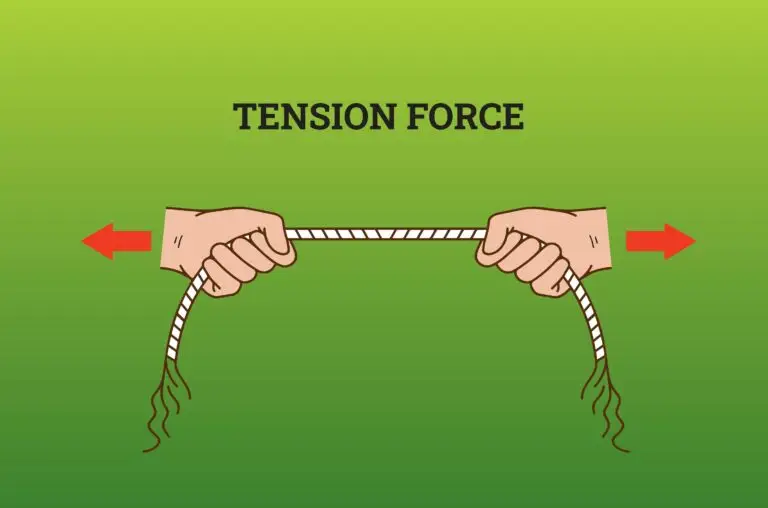Tension

Table of Contents
What is Tension?
Tension is a pulling force that acts along the length of a flexible or stretchable object, such as a rope, string, or cable, when subjected to pulling forces from opposite ends. Tension is a mechanical force that results from the pulling action exerted on an object. It acts along the length of the object and tries to elongate it.
The force of tension is directed along the length of the stretched object and away from the object applying the force. In the case of a rope or string, the tension pulls equally in opposite directions at any point within the material, maintaining a state of equilibrium.
Causes of Tension
Tension arises when external forces are applied to an object, pulling it in opposite directions along its length. This action stretches or elongates the object, creating tension within it. The force of tension is distributed evenly along the length of the object, assuming the material is uniform and the force is applied evenly.
For example, when two people pull on either end of a rope in a tug-of-war, they apply external forces that stretch the rope, generating tension. The rope’s response to these opposing forces is to resist being stretched, and this resistance is the tension force within the rope.
In another scenario, when an object is suspended by a cable, the weight of the object applies a downward force at one end of the cable, while the anchor point of the cable provides an equal and opposite force at the other end. This creates tension in the cable, which must be strong enough to counteract the weight of the object to prevent the cable from breaking.
The generation of tension in an object is dependent on the strength and direction of the applied forces and the object’s material properties.
Characteristics of Tension
Direction
Tension force always acts along the object’s length and is directed outward from the object’s center, or more precisely, away from the point where the force is applied. In the case of a rope or cable, the tension force pulls along the object from one end to the other, attempting to elongate it.
Magnitude
The tension force’s magnitude, or strength, can vary depending on several factors. It is influenced by the material’s inherent strength and ability to withstand being stretched or pulled. The amount of stretching the object undergoes also affects the tension; more stretching generally leads to higher tension.
Additionally, the external forces applied to the object play a significant role; greater force will result in greater tension. The material’s cross-sectional area and its elasticity also contribute to how tension will manifest within it.
Tension in Ropes and Cables
Ropes, cables, and strings are designed to operate under tension, which is the force that acts along their length when they are pulled or stretched. This tension enables these objects to carry loads, transmit forces, and maintain structural stability.
When a rope or cable is pulled taut, it experiences tension distributed evenly along its length, provided the material is uniform and the force is applied evenly. This distributed tension allows ropes and cables to support and transfer loads effectively. For example, when a weight hangs from a cable, the tension in the cable supports the weight, pulling upward with a force equal to the weight’s downward force, thereby maintaining equilibrium.
Tension and Elasticity
Tension and elasticity are closely related concepts in studying materials and their mechanical properties. When materials such as springs, elastic bands, and rubber are stretched, they experience tension, the force that tries to pull the material back to its original length.
Elasticity is a property of a material that allows it to return to its original shape and size after being deformed by an external force. This ability to recover from deformation is a key aspect of elastic materials. When such a material is stretched, the internal forces within the material resist the deformation, creating tension. The tension force increases with the degree of stretching up to a certain limit known as the elastic limit. Beyond this point, the material may undergo permanent deformation and not return to its original shape.
For example, when a spring is stretched, its tension increases as it elongates. This tension is a restoring force that tries to return the spring to its initial shape once the external force is removed. The relationship between the tension force and the amount of stretch in an elastic material is often linear, as described by Hooke’s law for springs, which states that the force exerted by the spring is directly proportional to the displacement or change in length.
Related Links
Centripetal Force
Force
Friction
Torque